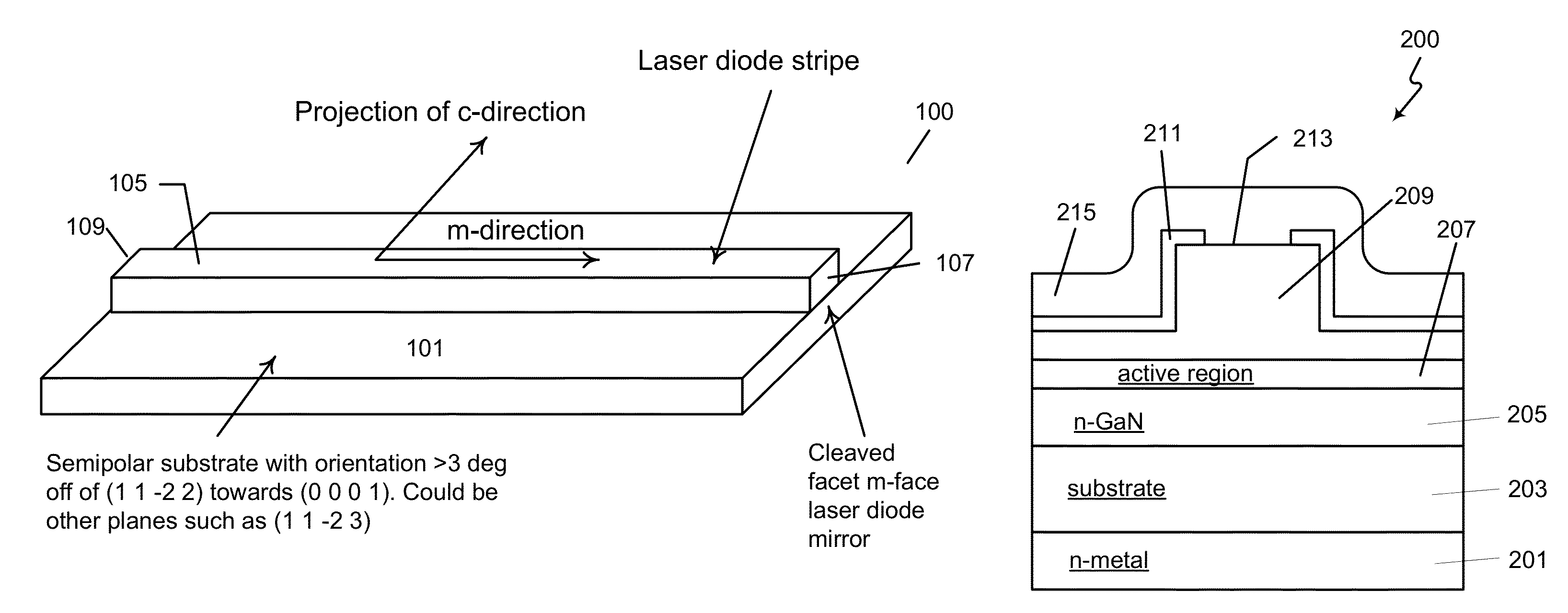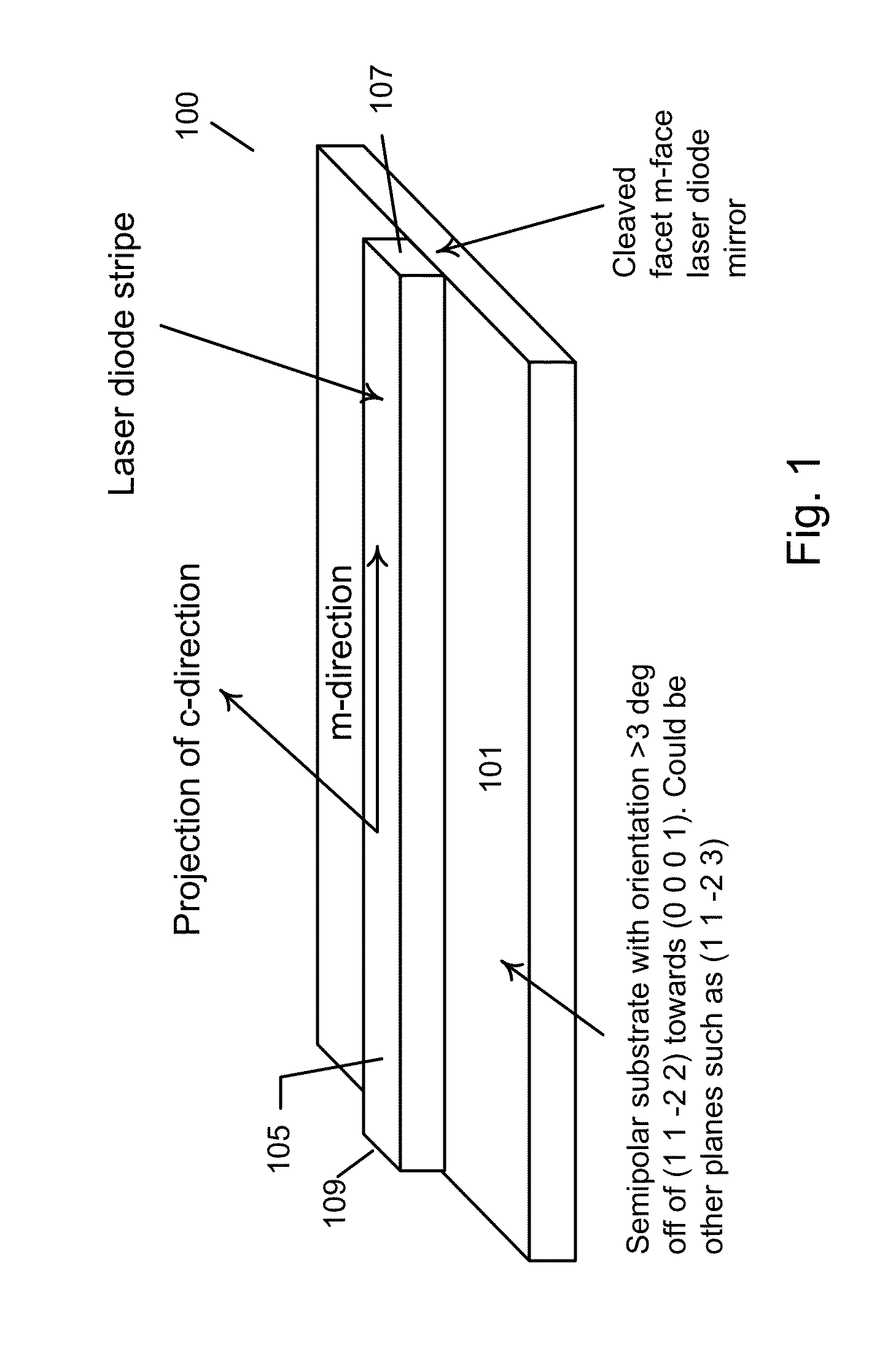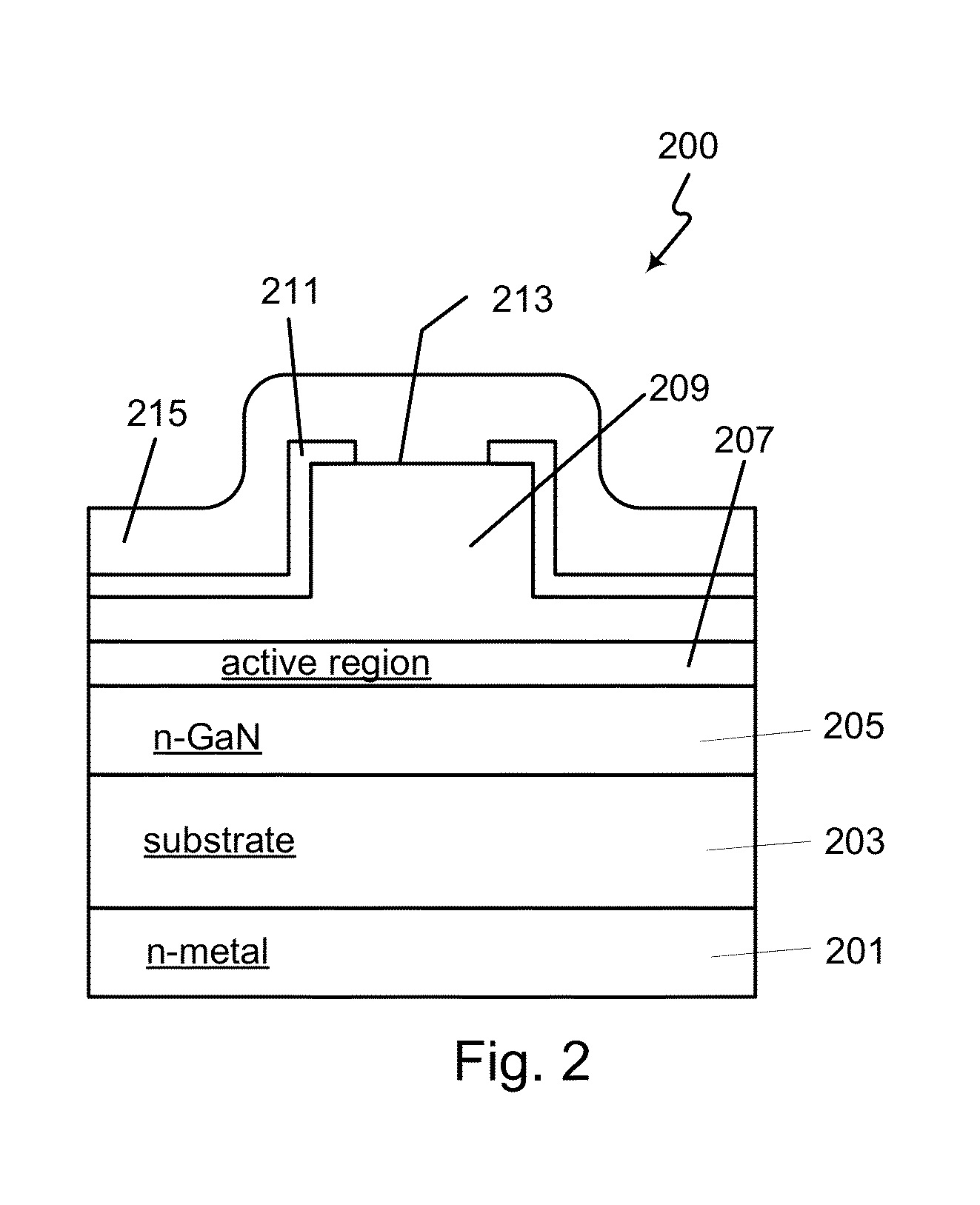Optical device structure using miscut GaN substrates for laser applications
- Summary
- Abstract
- Description
- Claims
- Application Information
AI Technical Summary
Benefits of technology
Problems solved by technology
Method used
Image
Examples
Embodiment Construction
[0025]In a specific embodiment, the (11-22) GaN crystallographic plane is desirable in the field of GaN optoelectronic devices due to its high indium uptake in InGaN films that enable efficient light emission into the green wavelength region. Furthermore, it has been discovered that the m-face of the (11-22) substrate can be cleaved to form laser facet quality surfaces, which is believed to be one of the key characteristics for manufacturing low cost laser diodes. In order to use such cleave plane, the laser stripes are preferably oriented in the m-direction on the substrate surface such that the stripe is normal to the mirror. By the rules of electromagnetics, the polarization of the light generated in the semiconductor is generally orthogonal to the propagation direction, which in the case of a laser is in the stripe direction. The polarization of the light is governed by the valence band structure within the semiconductor crystal. It has also discovered that when increasing the i...
PUM
 Login to View More
Login to View More Abstract
Description
Claims
Application Information
 Login to View More
Login to View More - R&D
- Intellectual Property
- Life Sciences
- Materials
- Tech Scout
- Unparalleled Data Quality
- Higher Quality Content
- 60% Fewer Hallucinations
Browse by: Latest US Patents, China's latest patents, Technical Efficacy Thesaurus, Application Domain, Technology Topic, Popular Technical Reports.
© 2025 PatSnap. All rights reserved.Legal|Privacy policy|Modern Slavery Act Transparency Statement|Sitemap|About US| Contact US: help@patsnap.com



